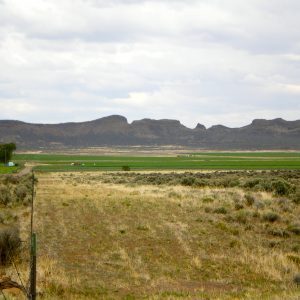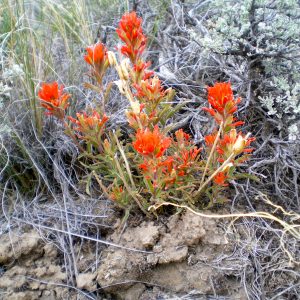Hello from Missoula, Montana! My name is Rachel and I started my CLM internship with the BLM on June 4th. Where, oh where to begin. In the past month I have been cramming my brain with new information, meeting all of the wonderful, friendly people in my office, hiking and adventuring in the beautiful country around Missoula and also exploring the awesome city itself.
On a more day to day basis, my mentor, my field partner and I have been doing a variety of things in the field, most of them revolving around vegetative surveys or monitoring BLM sensitive species plants and culturally important plants. Relating to the BLM sensitive species plants, we have been scouring potential habitats for Keeled Bladderpod (Lesquerella carintata), a rare mustard that is found in dry, steep sites with very loose, rocky soil. This is not easy hiking by any means due to its preferred habitat, however the scenery and views are stunning (as pictured below).

The culturally important plants we are monitoring are Camas (Camassisa quamash) and Bitterroot (Lewisia rediviva), two beautiful wildflowers that are shown below. Bitterroot is my favorite wildflower I have seen in Montana, it grows very close to the ground and has small succulent leaves, if leaves are even seen.


Later on in the summer when these plants are seeding, I will be collecting seeds, along with a few other species of shrubs (including Bitterbrush, Purshia tridentata, which is also pictured below).

The vegetative surveys we are conducting are Pace and Daubenmire surveys. These are conducted every 5 years to monitor changes in species diversity and soil, litter, moss and rock cover as a result of cattle and wildlife grazing in the area. Each survey involves finding the transect location using a GPS and photos from previous years. Once the transect location has been found the surveys are different in their methods. A Pace survey involves walking 100 paces from your starting point along the contour of the land (following a specific azimuth) and identifying the plant touching the tip of your boot and any over-story. A Daubenmire survey, which is shown in the picture below, involves running a 100ft tape from the transect’s starting point and placing the Daubenmire frame (the red and white rectangular box in the picture) every 5 feet on one side of the tape and every 10 feet on the other side of the tape. Then, all of the plants within this frame are identified in terms of their percent of ground cover.

Both of these surveys have helped me a great deal in learning my native plants here (and unfortunately non-natives too). Additionally, since the transects are scattered throughout BLM land, I have been lucky enough to explore lots of different habitat types and areas. I have seen some incredible landscapes and wildlife, including a Snowshoe Hare, a Red Fox den with playful pups, Mule and White-tailed Deer, Elk, Wild Turkeys, raptors of all sorts and so much more. I have also been learning a lot about using GPS units and GIS software which is often frustrating and slow going but a necessary skill to have in any field of biology.
Overall, I have had an amazing month! My internship is off to a great start, it is hard to believe sometimes that I get paid to go hike in beautiful country and look for and identify awesome plants! Thanks for reading!
Until next time,
Rachel














